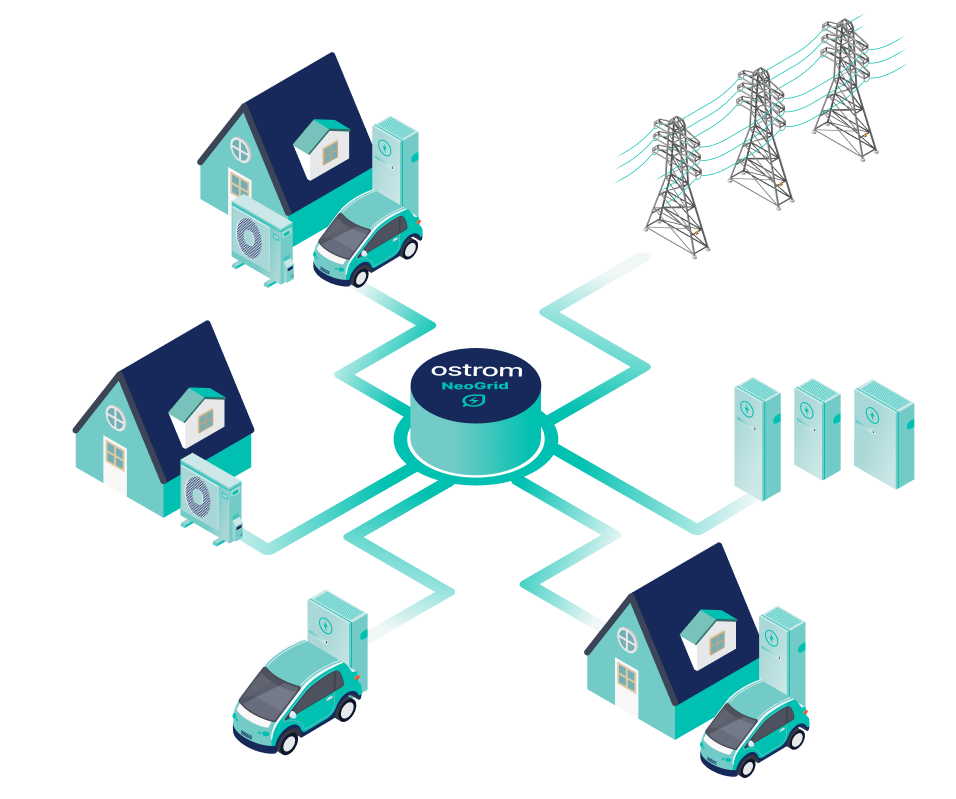Energy
Der Einfluss der Merit Order auf den Strompreis
By
Niklas Hirmke
12.8.2022

5
Min.

Was ist die Merit Order?
Die Merit Order beschreibt die Einsatzreihenfolge von stromproduzierenden Kraftwerken. Hierbei werden erneuerbare Energien (günstigste Stromproduktion) als Erstes eingesetzt und Strom aus Gaskraftwerken und Turbinen (teuerste Stromproduktion) als Letztes eingespeist. Die Merit Order stellt dabei aber keine gesetzliche Verpflichtung dar, sondern versucht zu beschreiben, wie sich der Strompreis auf dem Strommarkt ergibt. Diese optimale Versorgungsmenge orientiert sich an den niedrigsten Grenzkosten. Die niedrigsten Grenzkosten sind jene, die bei einem Kraftwerk für die letzte produzierte Megawattstunde anfallen. Die Merit Order ist somit unabhängig von den Fixkosten der Stromerzeugungstechnologie. Jene Kraftwerke, welche fortlaufend sehr günstig Strom produzieren, werden gemäß der Merit Order als Erstes zur Einspeisung zugeschaltet.
Kraftwerke aus erneuerbaren Energien, wie Wind und Sonne, werden als Erstes zur Stromerzeugung genutzt, weil hier die Kosten für die Stromproduktion und damit die Grenzkosten am niedrigsten sind. Da aber der Strombedarf (noch) nicht ausschließlich durch erneuerbare Energien gedeckt werden kann, werden Atom-, Kohle- und Gaskraftwerke dazugeschaltet und dies so lang, bis die Stromnachfrage gedeckt ist, wie auf diesem Foto zu sehen ist.

Wieso die Stromproduktion in Gaskraftwerken so teuer ist und wieso sie überhaupt noch gebraucht wird
Atomenergie, Braun- und Steinkohlekraftwerke werden eingesetzt, um die Baseload (Grundlast) des Strombedarfs zu decken. Die Baseload ist jener Bedarf an Strom, welcher sehr sicher und vorhersehbar verbraucht wird. Atom und Kohlekraftwerke abzuschalten ist ein teurer und aufwändiger Prozess. Daher werden diese genutzt, um zuverlässig auf lange Dauer Strom zu erzeugen.
Erneuerbare Energien wiederum sind nicht so konsistent wie die drei oben genannten Produktionsformen, da die Erneuerbaren von Wind und Sonne abhängig sind. Somit ist Sonnenenergie in der Nacht nicht verfügbar und Windenergie auch nur dann, wenn genügend Wind weht, was nicht 24/7 der Fall ist.
Daher werden auch immer noch Gaskraftwerke eingesetzt, um den Strombedarf zu Spitzenzeiten (Peakload) abdecken zu können. Gaskraftwerke zeichnen sich durch eine hohe Flexibilität aus, da sie eine kurze Startzeit bis zur Volllast haben und somit äußerst schnell betriebsbereit sind.
Die folgende Grafik illustriert den Unterschied zwischen Baseload und Peakload sehr schön.

Wie reduzierte Gaslieferungen aufgrund des Merit Order-Modells den Strompreis steigen lassen
Der Strommarkt ist, wie in einer Marktwirtschaft üblich, von Angebot und Nachfrage bestimmt. Strom ist nicht substituierbar. Privathaushalte, als auch die gesamte Wirtschaft, können ohne Strom nicht funktionieren.
Drosselt Russland Gaslieferungen und sinkt dadurch das Angebot für Gas, steigen Gaspreise an. Gaskraftwerke sind das letzte Glied in der Merit Order. Somit sind Gaskraftwerke aufgrund des Merit Order-Modells ausschlaggebend für den Strompreis, welcher in Folge reduzierte Gaslieferungen ansteigt, was auf folgender Grafik zu sehen ist.

Die Ungewissheit, wie viel und ob überhaupt Gas geliefert wird, verunsichert die Märkte. Daraus resultieren auch die extremen Preisschwankungen der letzten Monate.
Wieso ein Gasembargo eine Beruhigung der Strompreise mit sich bringen würde, kannst du in unserem Blog hier lesen.
Das Merit Order-Modell und der Strompreis für Direktliferverträge
Ostrom hat mit Wind- und Sonnenparks in Deutschland Direktlieferverträge (PPAs) abgeschlossen. Jener Bedarf an Strom, welche nicht durch diese PPAs abgedeckt werden kann, kauft Ostrom am Spotmarkt ein. Genaueres über die Unterschiede zwischen kurz- und langfristigen Stromlieferverträgen kannst du hier in unserem Blog lesen.
Bei den PPAs mit unseren Partnern wird der Strompreis monatlich festgesetzt. Daher ist auch hier der Preis von den Entwicklungen am Strommarkt abhängig.















.avif)